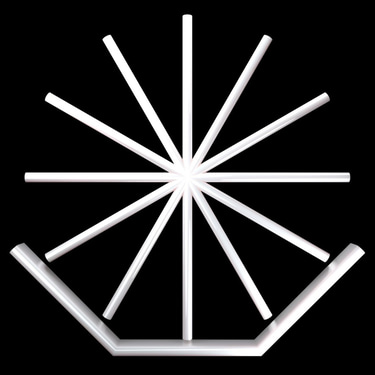Trisha Brown’s Floor of the Forest
Jessica Cook
4/5/2013


This weekend marked the start of a series of performances as part of Trisha Brown Dance Company: The Retrospective Project. The series honors dancer and choreographer, Trisha Brown’s contributions to the field of dance through a performative version of a museum retrospective. The Retrospective Project begins with performances of earlier pieces, such as Floor of the Forest (1970) and her seminal Man Walking Down the Side of a Building (1970). The series culminates in two compilation performances at UCLA’s Royce Hall that include works created as recently as 2011.
In Floor of the Forest, two dancers move atop a square rope lattice suspended at eye-level from a metal framework. Brightly colored clothing hangs from the ropes, like outfits neatly laid out for the wearer. Brown’s decision to transpose the seemingly simple action of robing and disrobing by 90 degrees forces dancers to physically and mentally absorb themselves in the present task. The dancers, both dressed in black, navigate the structure through the act of putting on and then taking off the hanging clothing, which act as (what the Program Notes describe as) a “cocoon or hammock.” The ‘cocoon’ becomes an intimate space that allows the dancers to rest between movements, and supports them within the liminal spaces of the apparatus. As the dancers repeat and embrace the everyday action of dressing and undressing, the piece becomes a continual cycle of construction and removal.


